I’ve always heard the Twin Peaks Pilot Episode was available in the United Kingdom market and select other countries long before the episode aired in the United States on April 8, 1990. This article continues my in-depth examination of home video releases and attempts to solve the mystery of this particular VHS cassette release.
RELEASE TIMELINE
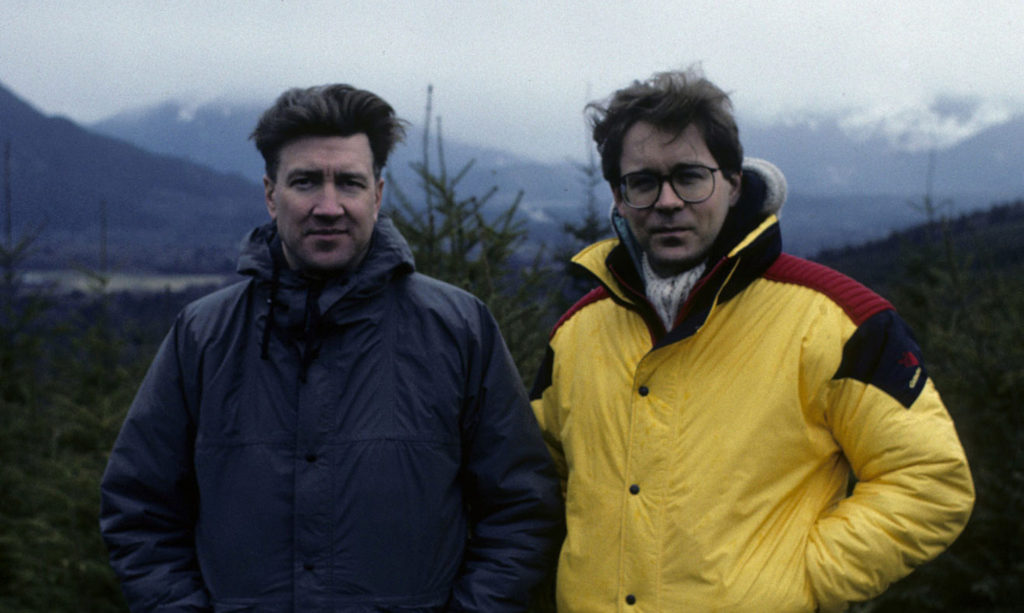
David Lynch and Mark Frost wrapped up production on the pilot episode in early 1989 and were already filming the first seven episodes by the time the VHS was released in the United Kingdom and other countries.
There are two different timelines as to when the pilot may have been available. Fellow Bookhouse Boy Jared Lyon shared the following details about a possible November 1, 1989 release (that was a Wednesday, so it was probably released on a Tuesday or Friday):
- According to John Thorne from Wrapped In Plastic, Video Watchdog #2 (Fall, 1990) listed the UK release of the extended pilot on Warner Home Video in November 1989. A copy of this magazine is en route to me, and I will update with an image once received.
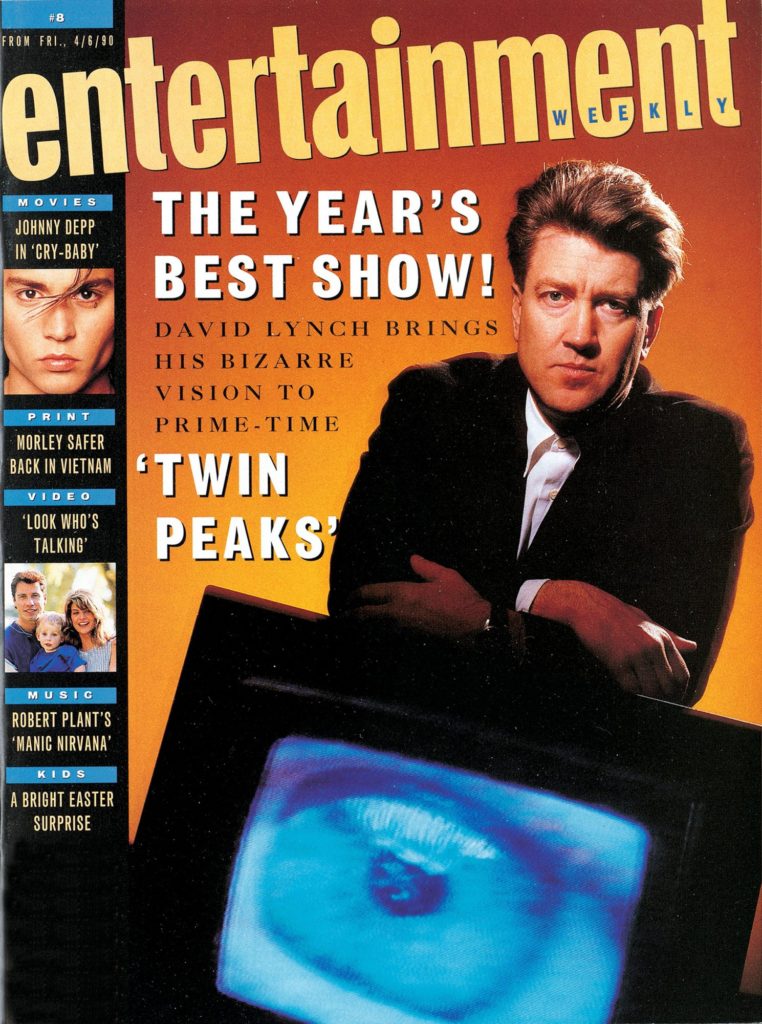
- In a sidebar with an image of the United Kingdom VHS, Entertainment Weekly (Issue #8, April 6, 1990) shared: “If you live in Belgium, Bolivia, Switzerland, or any of the 10 other countries where a cassette of Twin Peaks is available.”
Jan Bielawski made a post in rec.arts.tv on April 15, 1990 about the blurb from April 6 issue:
The European version of “Twin Peaks” is a single video cassette the first
two hours of which look exactly like the pilot aired here but then it “continues for 18 tantalizing minutes after ABC’s first episode comes to its cliff-hanging halt. It races to wrap up mysteries that may take several weeks or more to resolve on television.” It resolves all the mysteries but “a spokesman for the show won’t even say whether the killer will be the same at home and abroad.”
When Warner Home Video bought the foreign distribution rights they put Lynch and Frost under an obligation “to provide a film with an ending. Lynch fulfilled the requirement with one last scene (no spoilers), a chilling, almost indecipherable epilogue.” It involves … a psychic dwarf, a computer-distorted soundtrack and whatnot. A spokesman for the show says “it’s unlikely to air … except possibly as a dream sequence.”
Per another post on April 17, 1990 in alt.tv.twin-peaks, Joe Siri Ekgren described the ending and mentioned it was available for rental in Norway.
So we know that some fans around the world had already seen the episode before the pilot’s debut in April 1990.
CLUES TO DECEMBER 1989
While researching, I stumbled upon a short blurb in the December 5, 1989 edition of The Guardian.
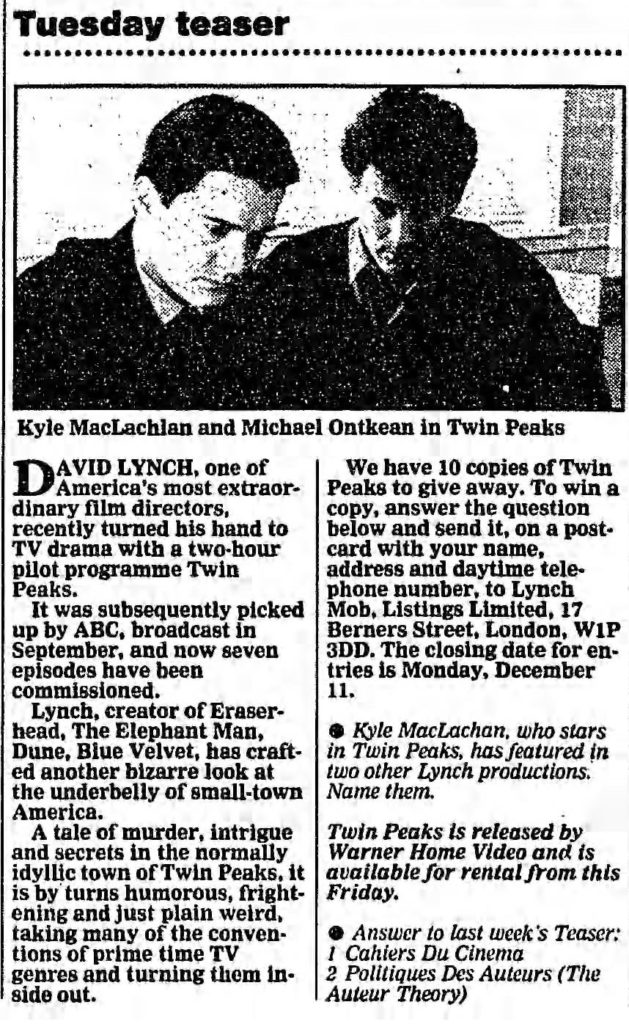
The article mentions that the show was already picked up in September 1989 by ABC and that seven additional episodes were commissioned. This is true.
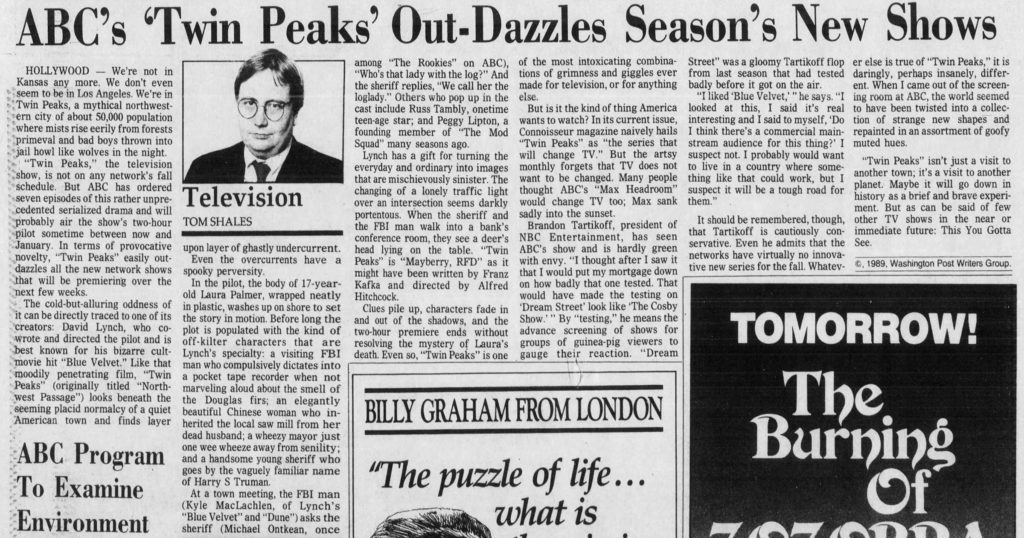
A syndicated column from Tom Shales ran in the Albuquerque Journal on September 7, 1989 (it would appear multiple times throughout the month of September). In the story, he mentions ABC picking up the show for seven episodes and would probably air the pilot between September and January. Before I get too far, this will be part of a completely different story so stay tuned.
Back to the UK release…
The blurb in The Guardian offers a very important clue about the actual release date. The paper ran a contest to distribute 10 copies of the pilot episode. The article closed by saying Twin Peaks is being released by Warner Home Video and “available for rental from this Friday.”
That date would be Friday, December 8, 1989. I wonder who won that contest.
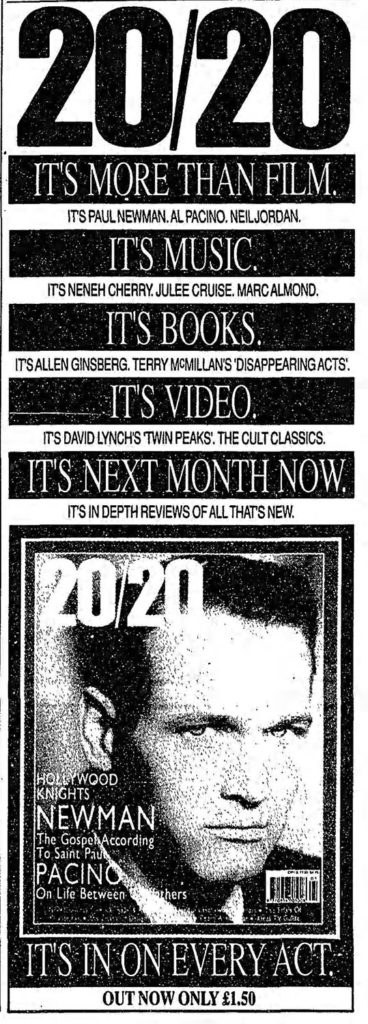
A few days later, an advertisement ran in the December 14 edition of The Guardian for 20/20 magazine. The January 1990 issue would discuss “David Lynch’s ‘Twin Peaks.’ The Cult Classics.” I also have a copy of this magazine on the way and will update with any new info. There is a longer lead time for magazines, so I’m hopeful this article will offer some great insight. To have a specific article about the release means they knew about it weeks or months in advance.

Finally, the December 21, 1989 edition of The Guardian had a small print advertisement from British retailer, WHSmith. The description read:
Twin Peaks
Video (Cert 15) £9.99
The pilot episode of David Lynch’s surreal TV mystery is now available on video. Set in a tranquil American backwater, it contains 20 minutes of previously unseen footage posing even more clues
as to who killed Laura Palmer.
It’s strange they chose this particular marketing as audiences would be unfamiliar with the now infamous question, “Who killed Laura Palmer?”
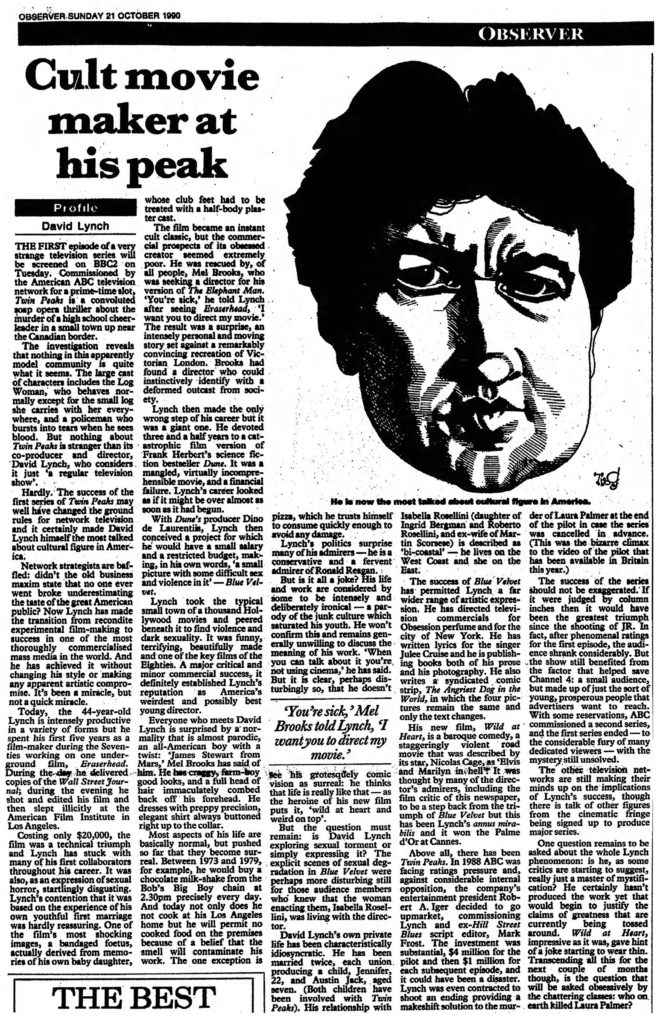
Nearly a year later, The Observer published a profile piece on David Lynch in their October 21, 1990 edition.
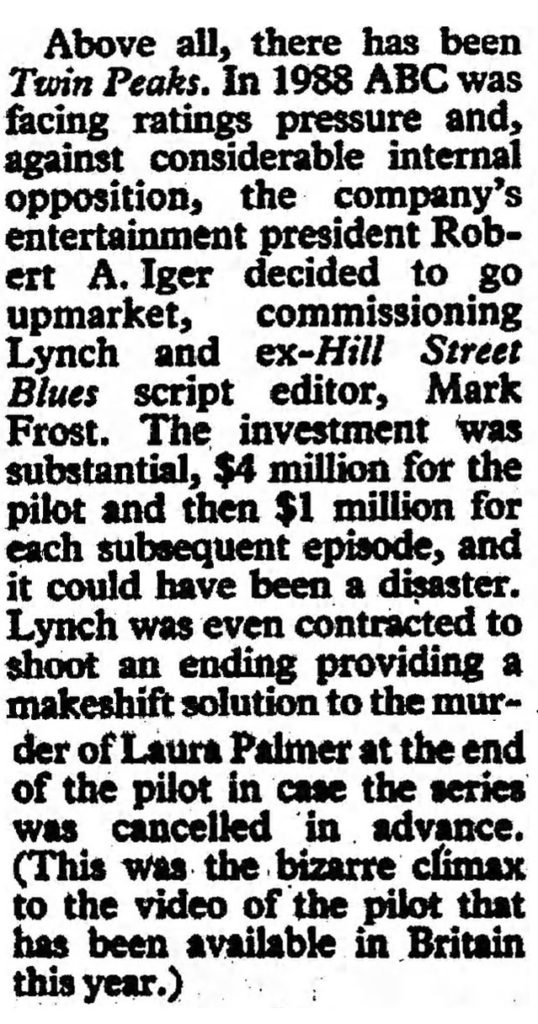
At the end of one paragraph, they write, “[The makeshift solution] was the bizarre climax to the video of the pilot that has been available in Britain this year.”
So it would seem December 8, 1989 is most likely the first day that this United Kingdom VHS release was made available to the masses. It’s unclear about release dates for other countries as information hasn’t been forthcoming. I would argue that most likely December 8 was the release date for them too.
THE VHS COVER – RETAIL VERSION
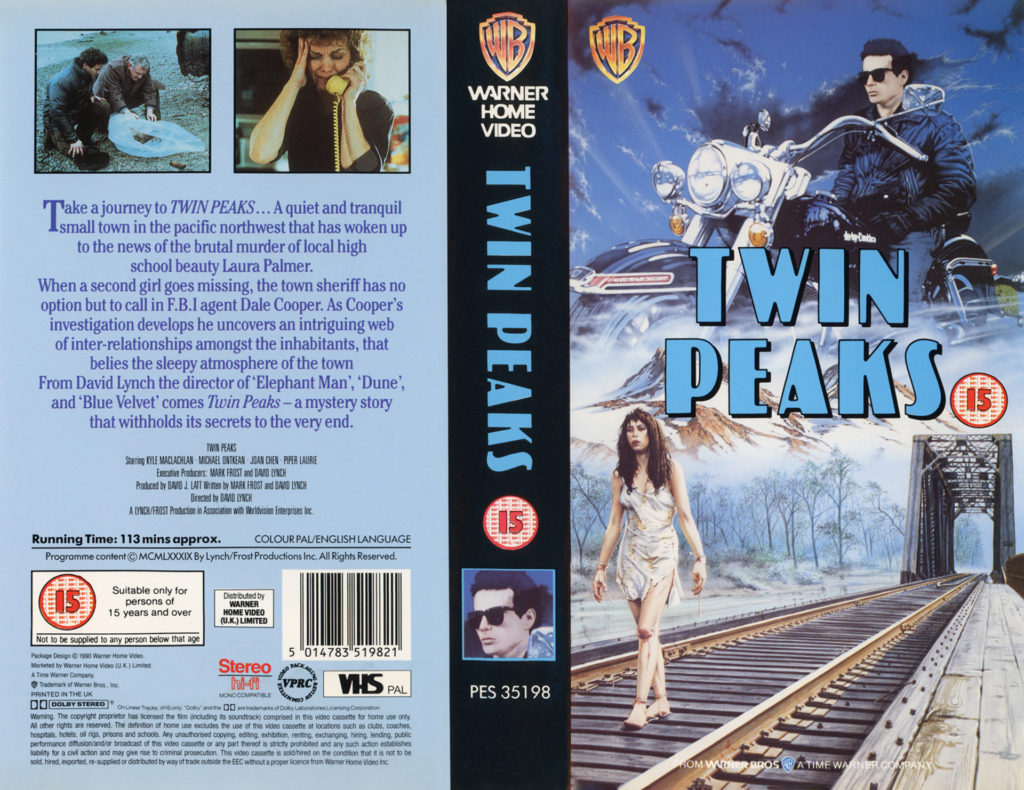
I found two different versions of this VHS cover. The first is what I’m calling the “Retail Version.” The catalog number is PES 35198.
This image sleeve is presented in a nondescript case. The VHS case I won via an eBay auction was black, which I’m assuming was the original color/case.
Since this is a PAL video cassette, I’m unable to play it at home. Gosh, I’d love to know what secrets this tapes holds and maybe one day I’ll get a PAL VHS player.
Here are two Twin Peaks logos pulled from the packaging, which would be one of the first public facing logos for the series.
THE VHS COVER – RENTAL VERSION
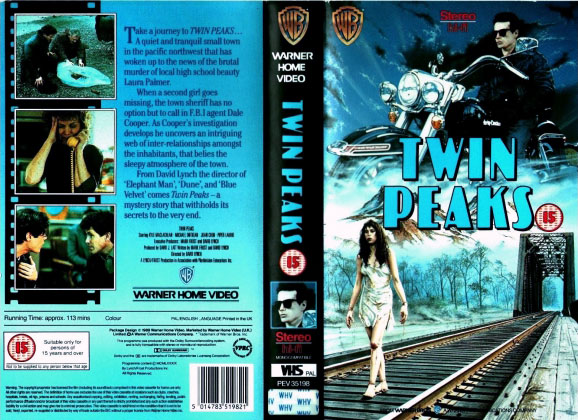
VideoCollector.co.uk listed an alternate cover for this VHS release that was supposedly available as a “Big Box – Rental Tape.” The back cover includes a third photo of Bobby Briggs and Sheriff Truman at Twin Peaks High School. I’ve not found a copy of this version available at auction but, of course, now I want it.
THE ARTWORK
For fun, I removed the text from the front cover to create the image above. Unfortunately, no artist is credited for design. If the packaging artist is out there, please drop me a line at TheTwinPeaksBlog@gmail.com as I’d love to give you proper credit.
The artist referenced two publicity photographs when drawing the artwork.
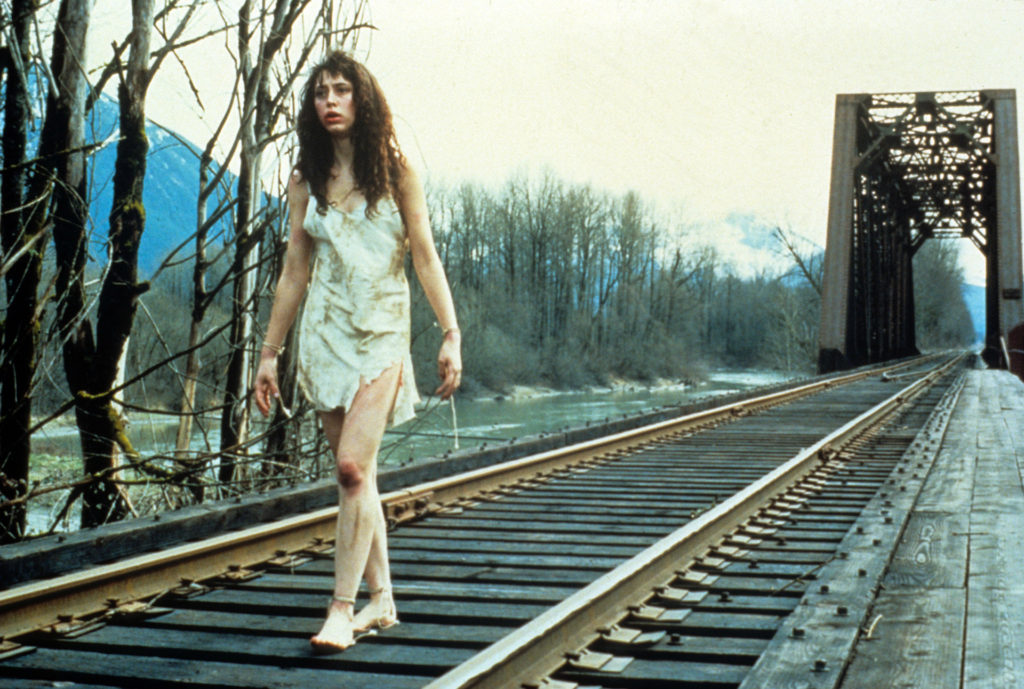
The first shows Ronette Pulaski stumbling along the railroad trestle.
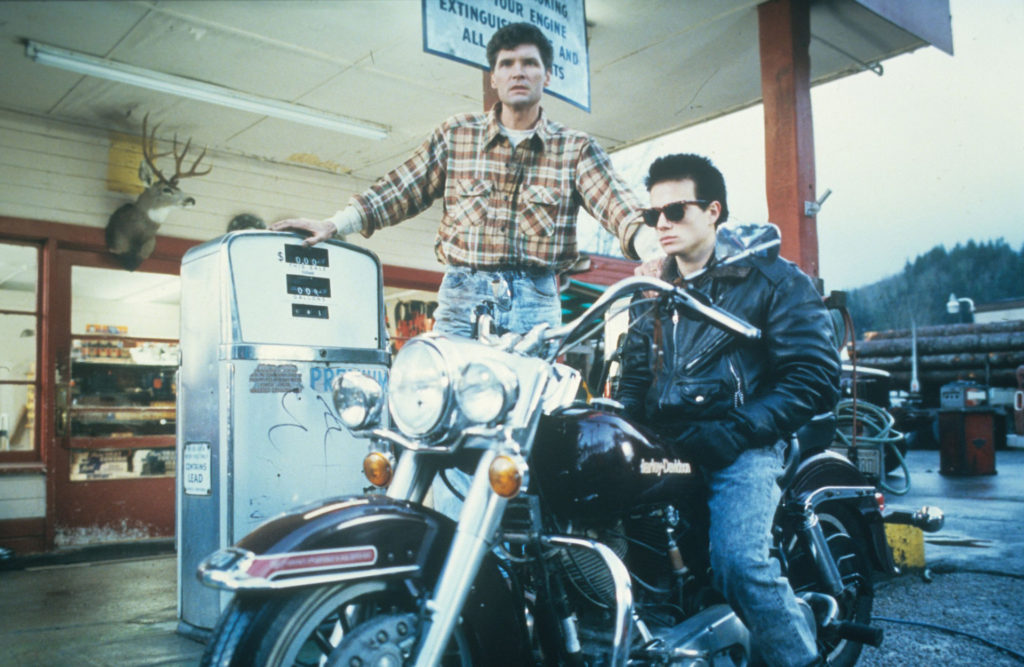
The second image of James Hurley on his Harley Davidson appears to come from this publicity photo (sans Big Ed’s arm and hand).
THE BACK COVER AND SYNOPSIS
The back of the VHS contains a uniquely written synopsis for the film:
Take a journey to TWIN PEAKS. . .
A quiet and tranquil small town in the pacific northwest that has woken up to the news of the brutal murder of local high school beauty Laura Palmer.
When a second girl goes missing, the town sheriff has no option but to call in F.B.I agent Dale Cooper. As Cooper’s investigation develops he uncovers an intriguing web of inter-relationships amongst the inhabitants, that belies the sleepy atmosphere of the town.
From David Lynch the director of ‘The Elephant Man,’ ‘Dune,’ and ‘Blue Velvet’ comes Twin Peaks – a mystery that withholds its secrets to the very end.
I love how the town sheriff “has no option but to call in F.B.I. agent Dale Cooper.” They left out that she crossed state lines which, in the United States immediately prompts a call to the FBI. UK audiences probably didn’t know the nuances of law enforcement in the states, so this was probably the easiest way to describe it.
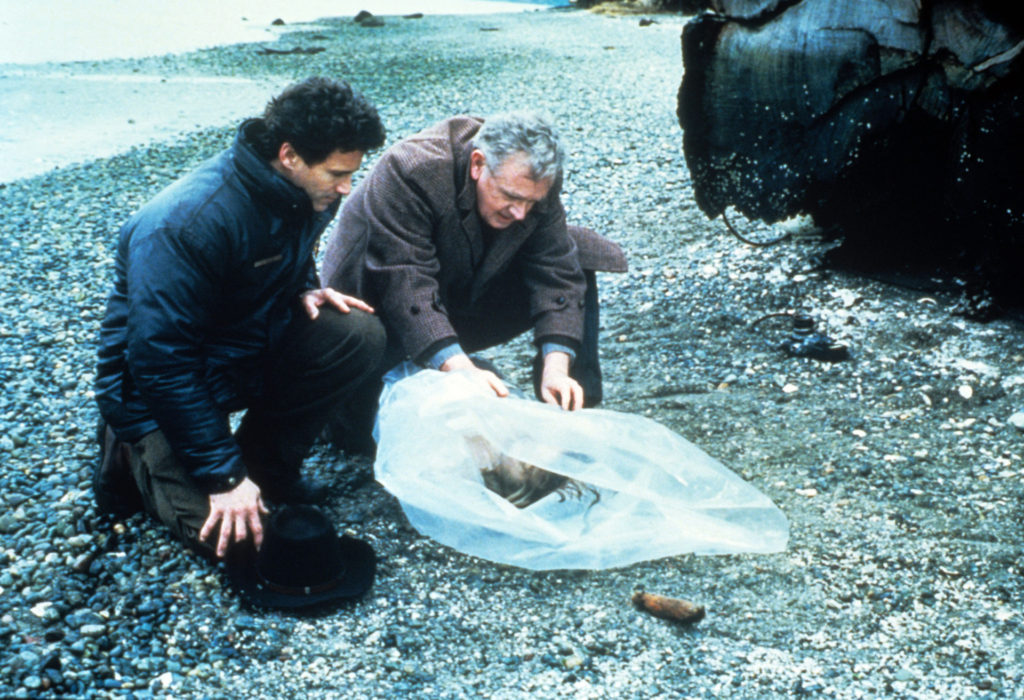
The back of the box contains three publicity images including one of Sheriff Truman and Dr. Hayward with Laura Palmer’s body.
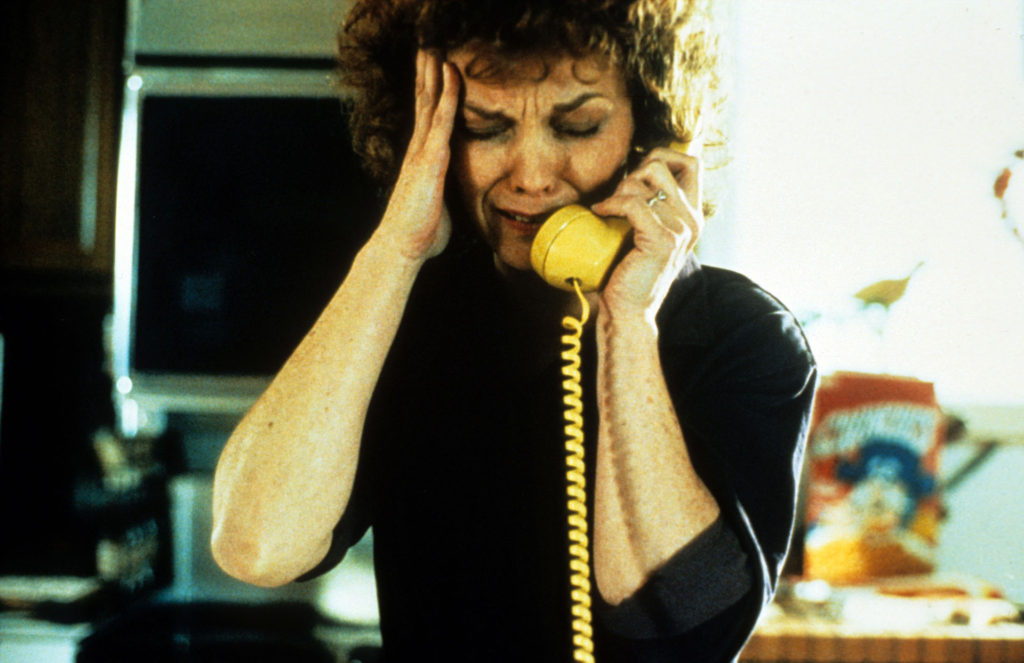
A second image features Sarah Palmer on the phone in her kitchen.
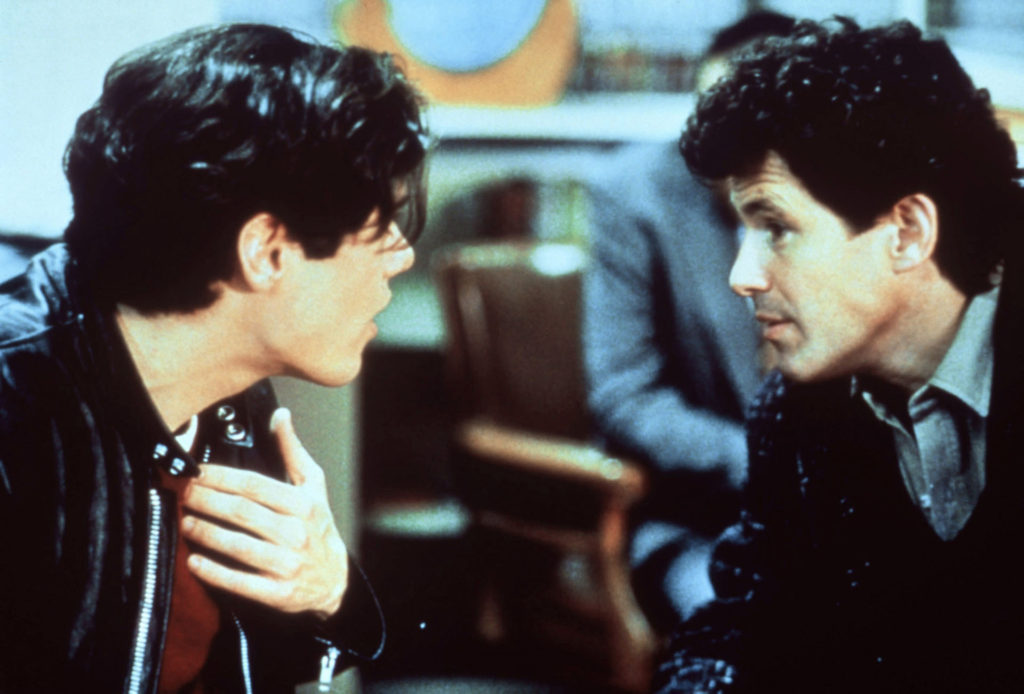
As mentioned, the rental version contains one bonus image of Bobby Briggs and Sheriff Harry S. Truman.
One other note that made me laugh. There is a disclaimer that provides a definition of “home use.”
“The definition of home use excludes the use of video cassette at locations such as clubs, coaches, hospitals, hotels, oil rigs (!!), prisons and schools.”
THE VHS CASSETTE
This is how my video cassette appears but there are alternate versions.
I found an alternate label for this release with a gold border.
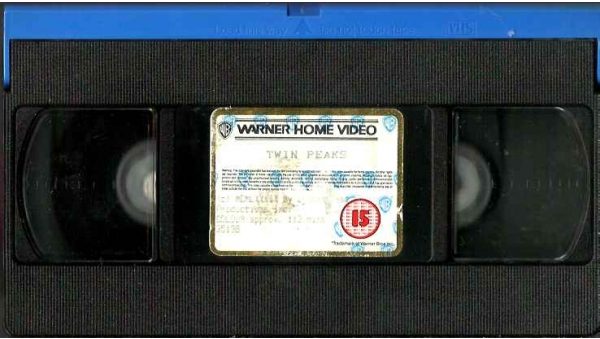
The United Kingdom Video Collector site also showed a different version of the VHS cassette for the Big Box Rental tape. The primary difference is the blue lid.
1993 VHS RELEASE
I also found another variation of this VHS release from 1993. The packaging was been designed to match the packaging of the VHS release in the United States.
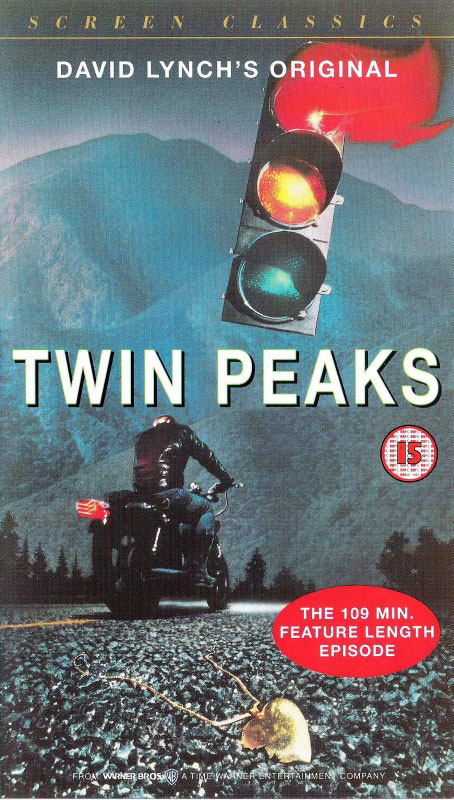
The cover includes a red button that calls out the “109 Min. Feature Length Episode.” Somewhere along the way, we lost four minutes as the original 1989 release stated the episode was 113 minutes.
Fellow Bookhouse Boy Mathieu Lalonde commented below about the time difference.
“This is probably just due to what is called PAL speedup.
In NTSC, films get converted from 24 frames per second to 60 interlaced fields per second by adding a 3-2 pulldown so that each alternating film frame lasts either 2 fields or 3 and thus creating a 30fps (60 interlaced fields) video running at the correct speed.
PAL on the other hand runs at 50 interlaced fields per second so 24fps films are simply played back at 25fps to compensate and the result is a 4% speedup of the film.”
Thank you Mathieu for the explanation. I learned something new!
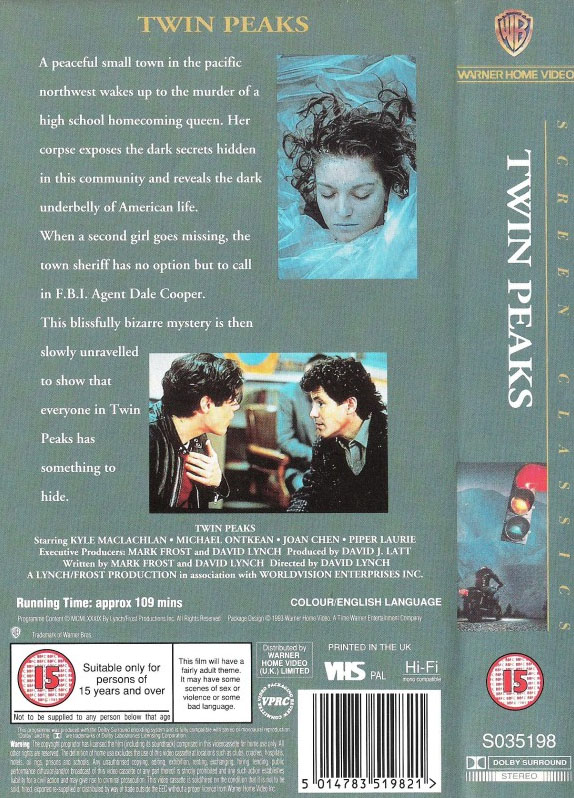
The back cover includes a slightly different synopsis which seems to adopt marketing language found in the United States:
“A peaceful small town in the pacific northwest wakes up to the murder of a high school homecoming queen. Her corpse exports the dark secrets hidden in this community and reveals the dark underbelly of American life.
When a second girl goes missing, the town sheriff has no option but to call in F.B.I. Agent Dale Cooper. This blissfully bizarre mystery is then slowly unravelled to show that everyone in Twin Peaks has something to hide.”
“Blissfully bizarre” … perhaps another way to say “wonderful and strange.”
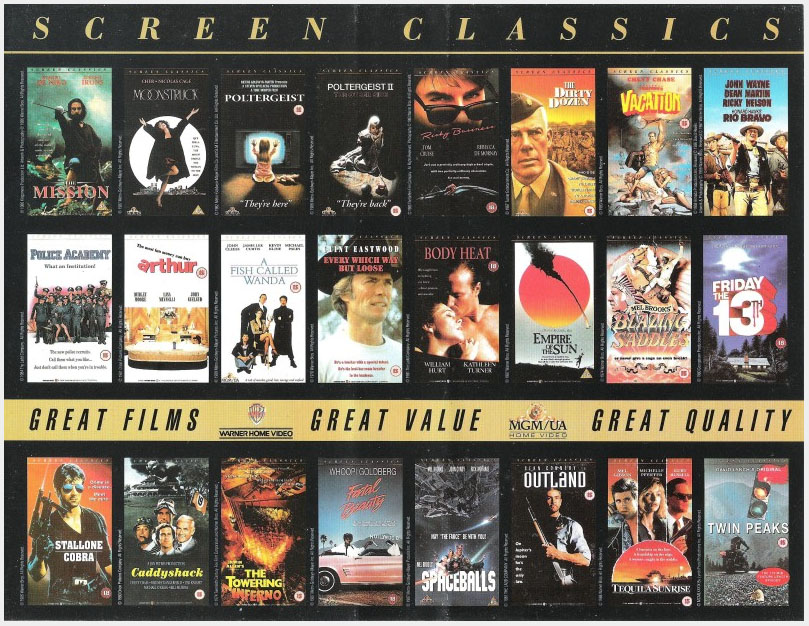
The VHS included an advertisement for other “Screen Classics” releases, including a small image of Twin Peaks.
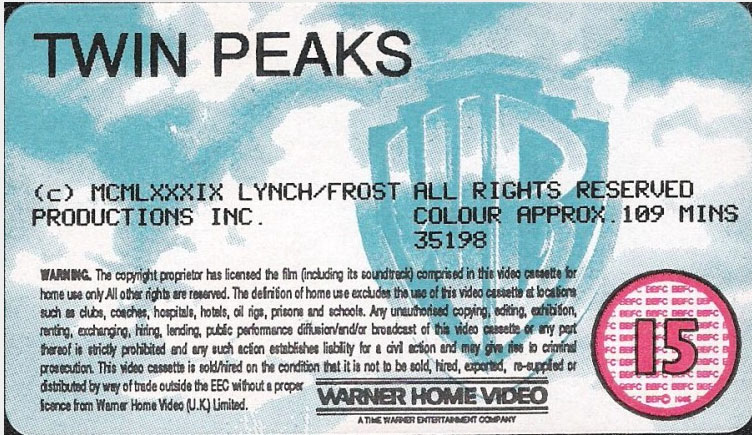
The VHS cassette label also looks slightly different.
This article, like so many others, are a work in progress. If new information is discovered about the release dates or other packaging options, I will update this story.
Discover more from TWIN PEAKS BLOG
Subscribe to get the latest posts sent to your email.

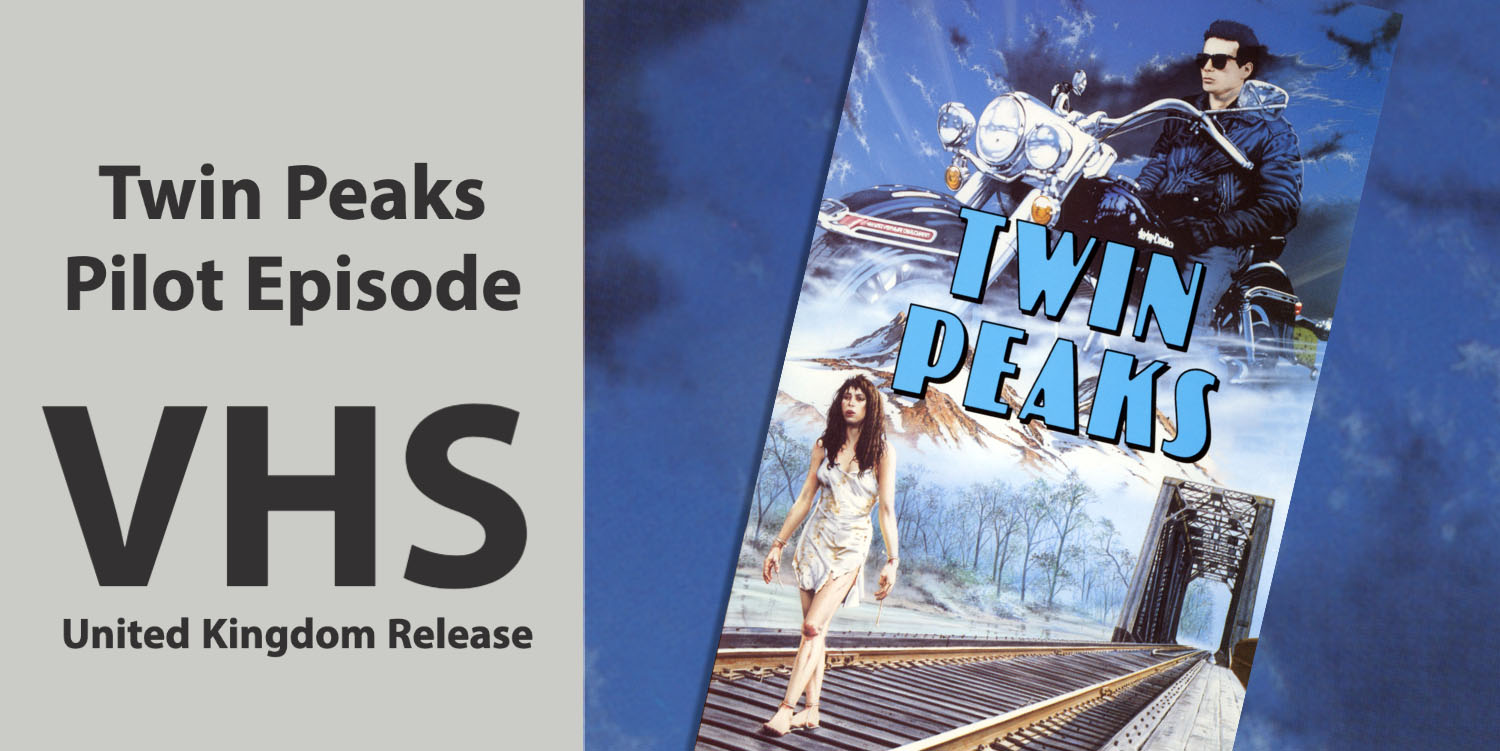
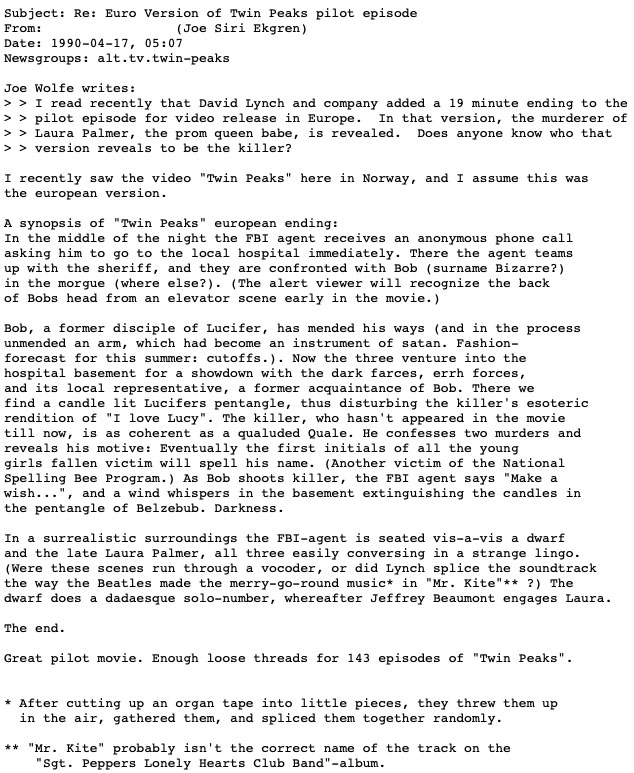
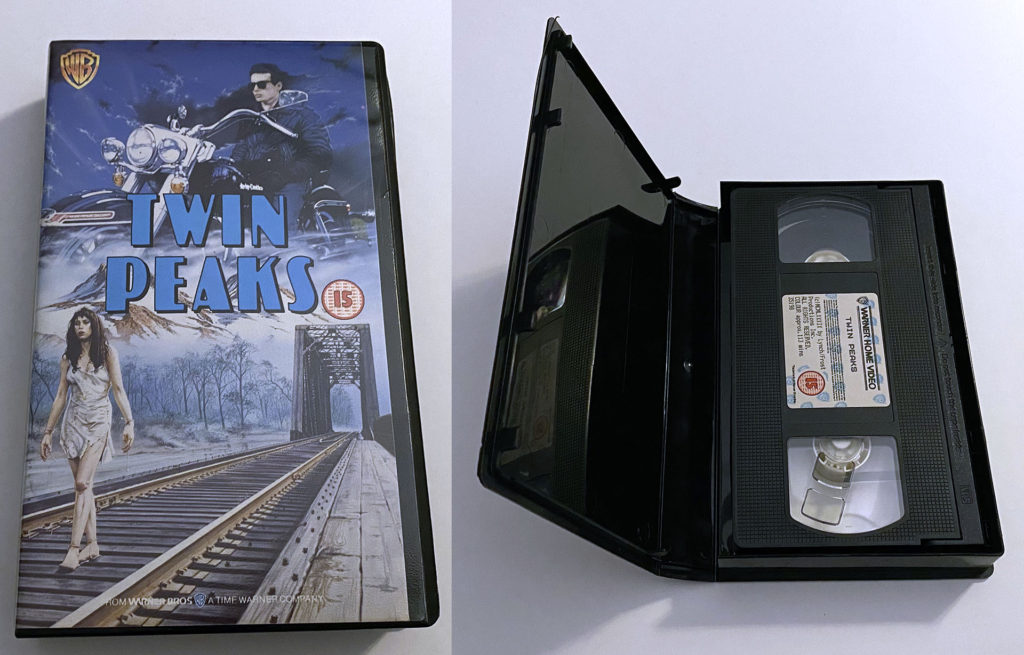
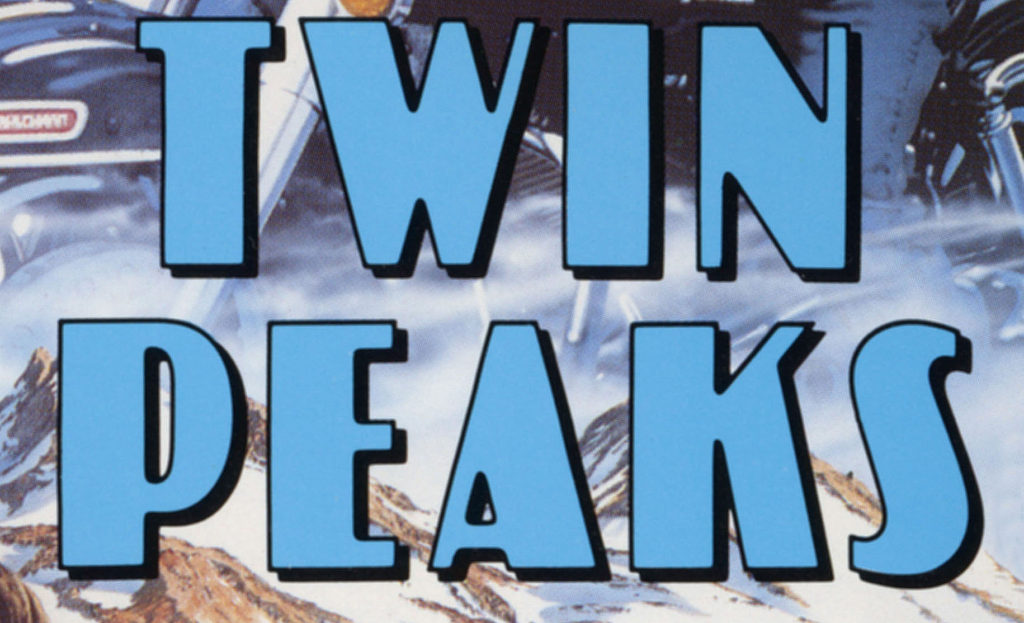

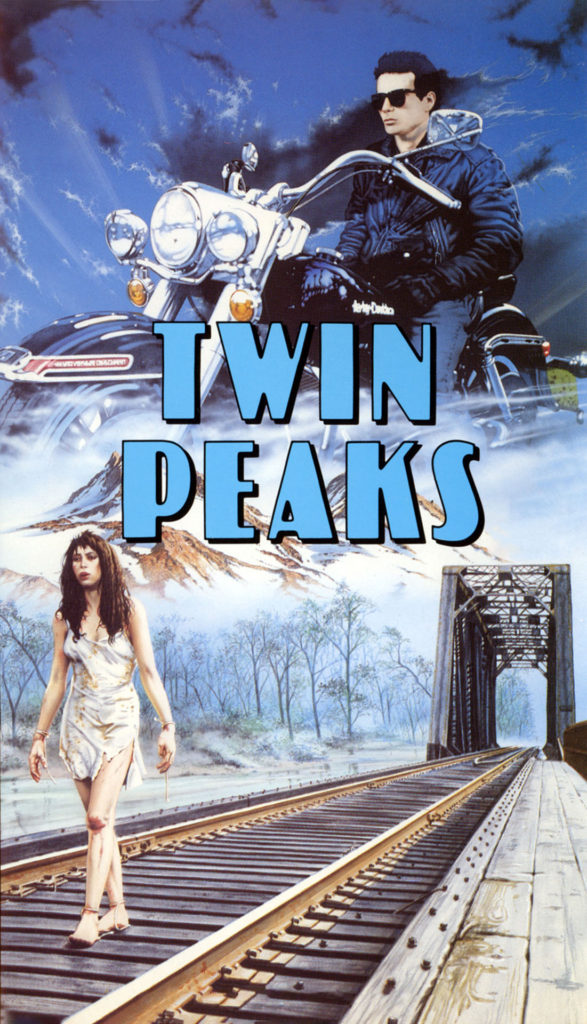
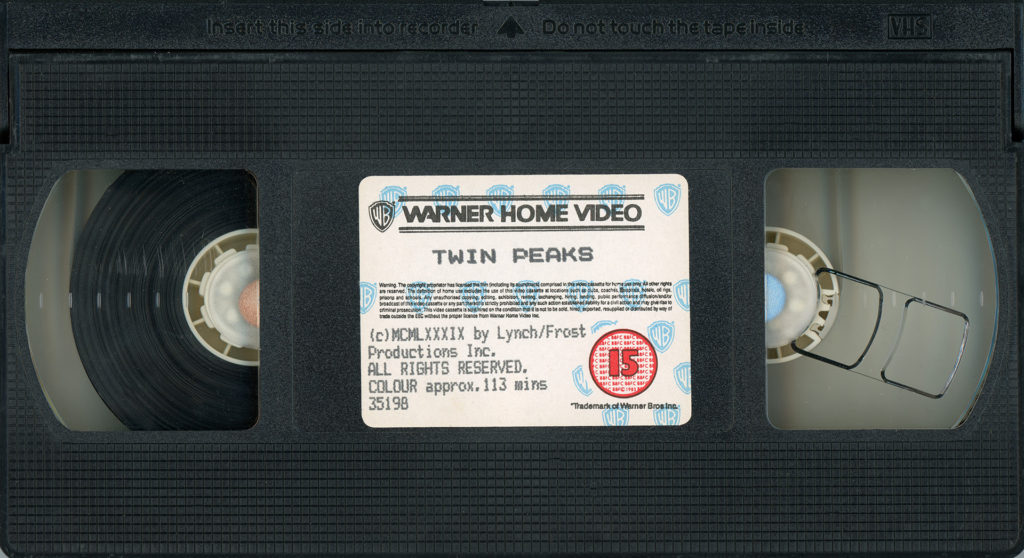
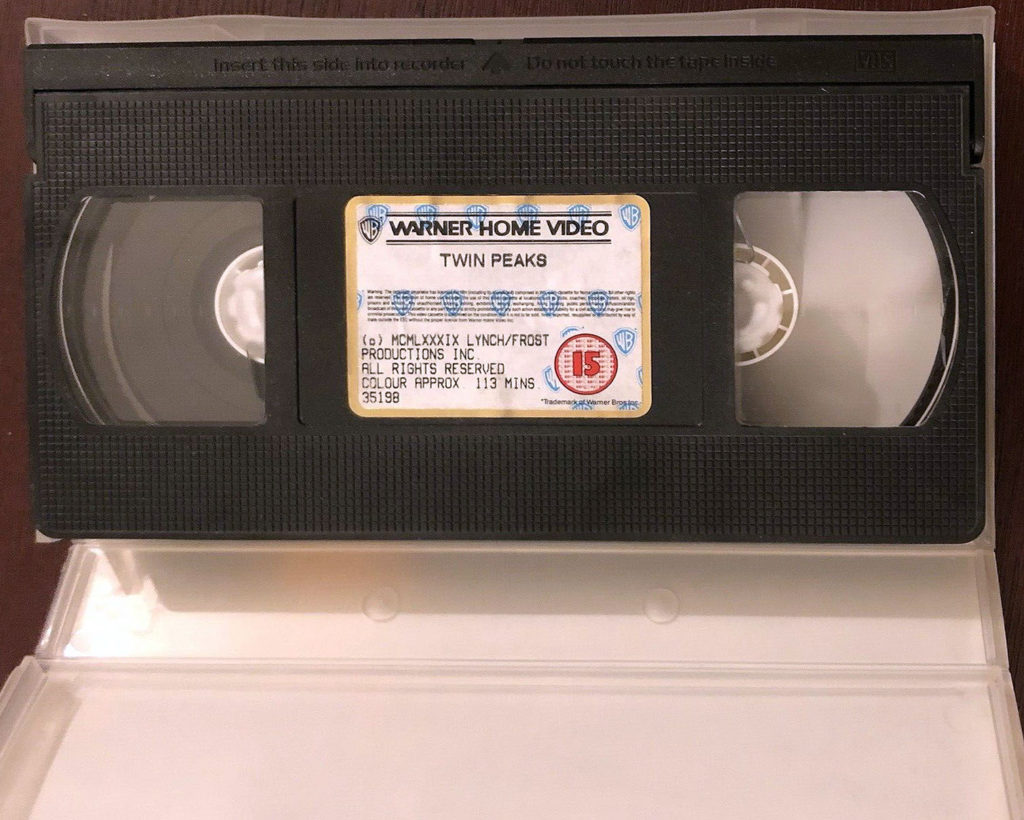
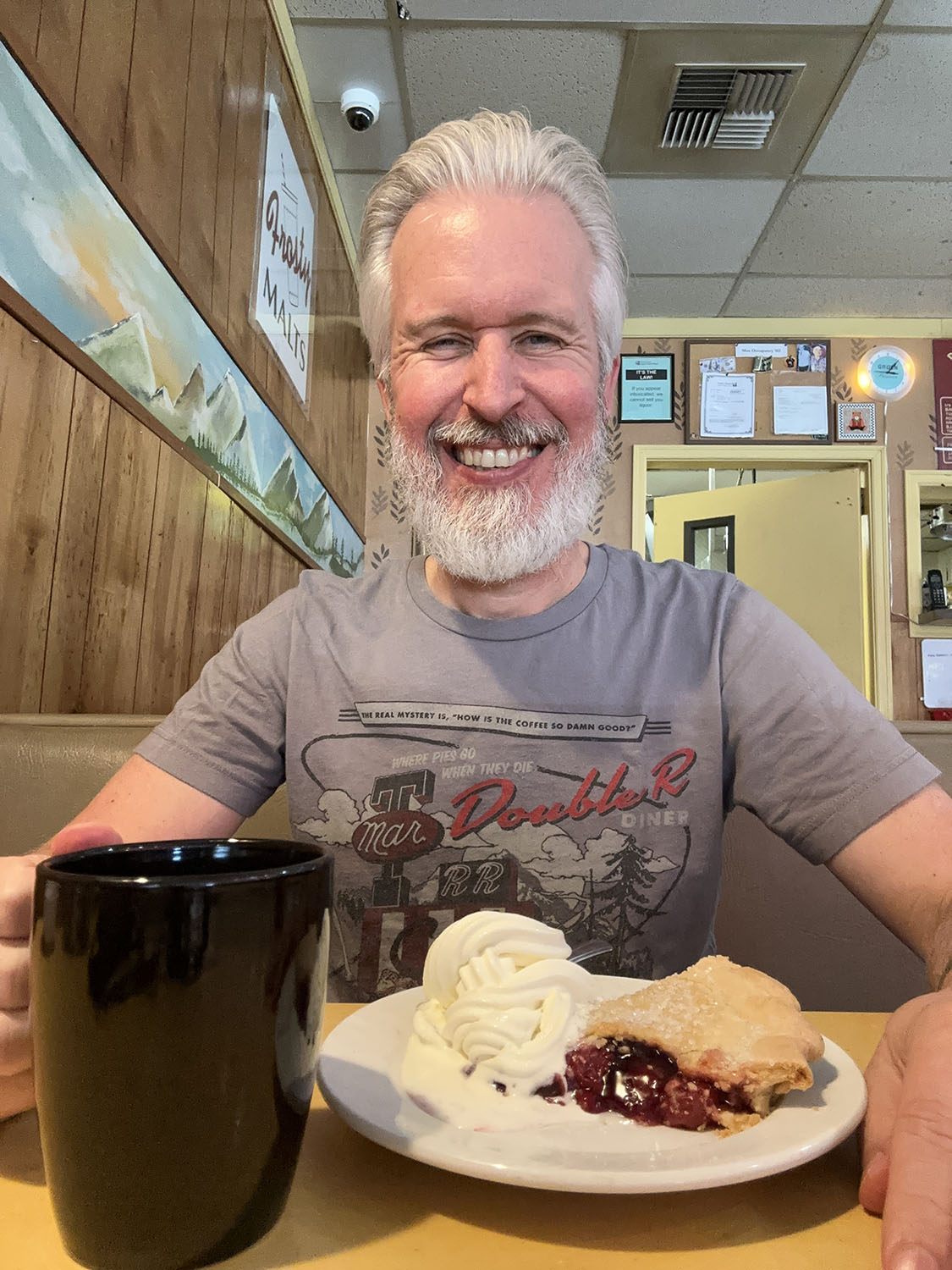

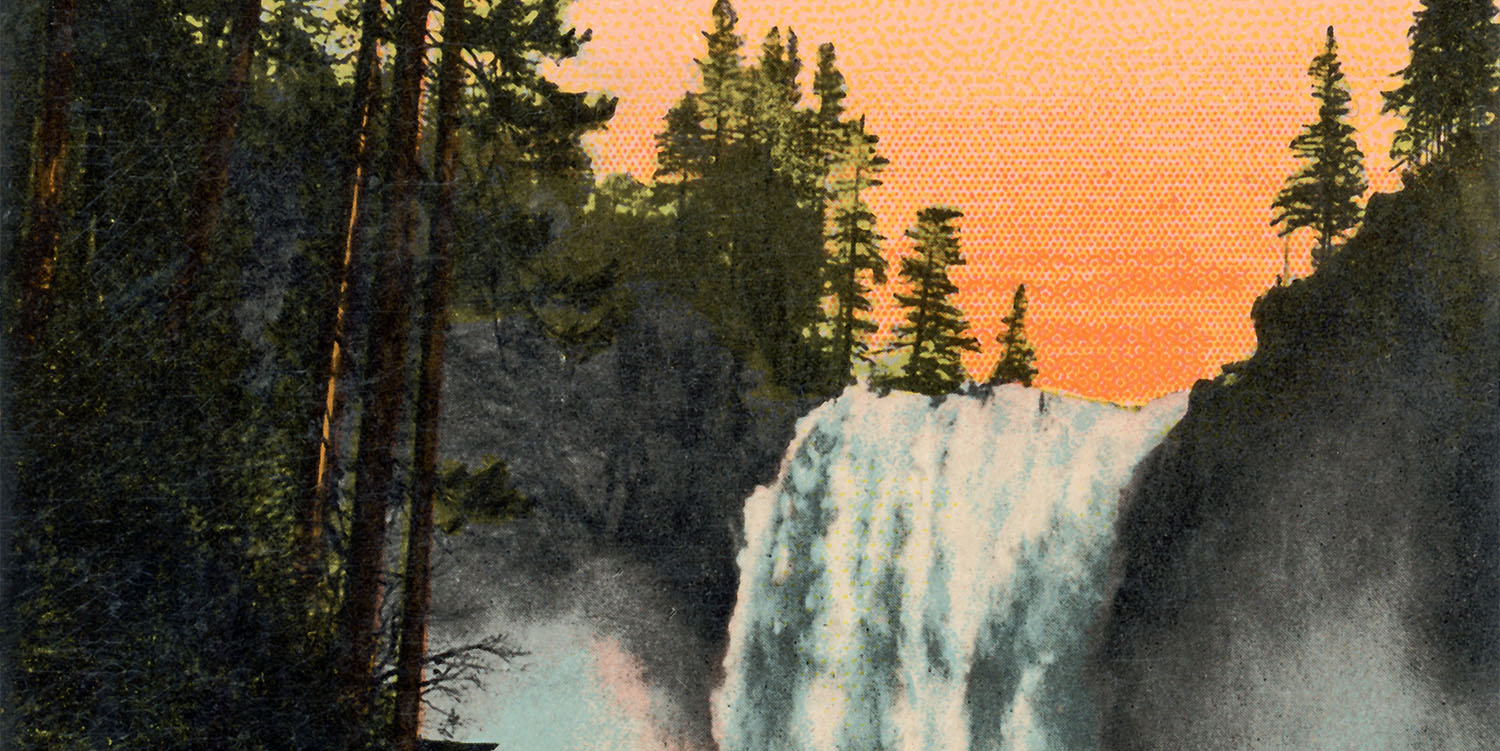
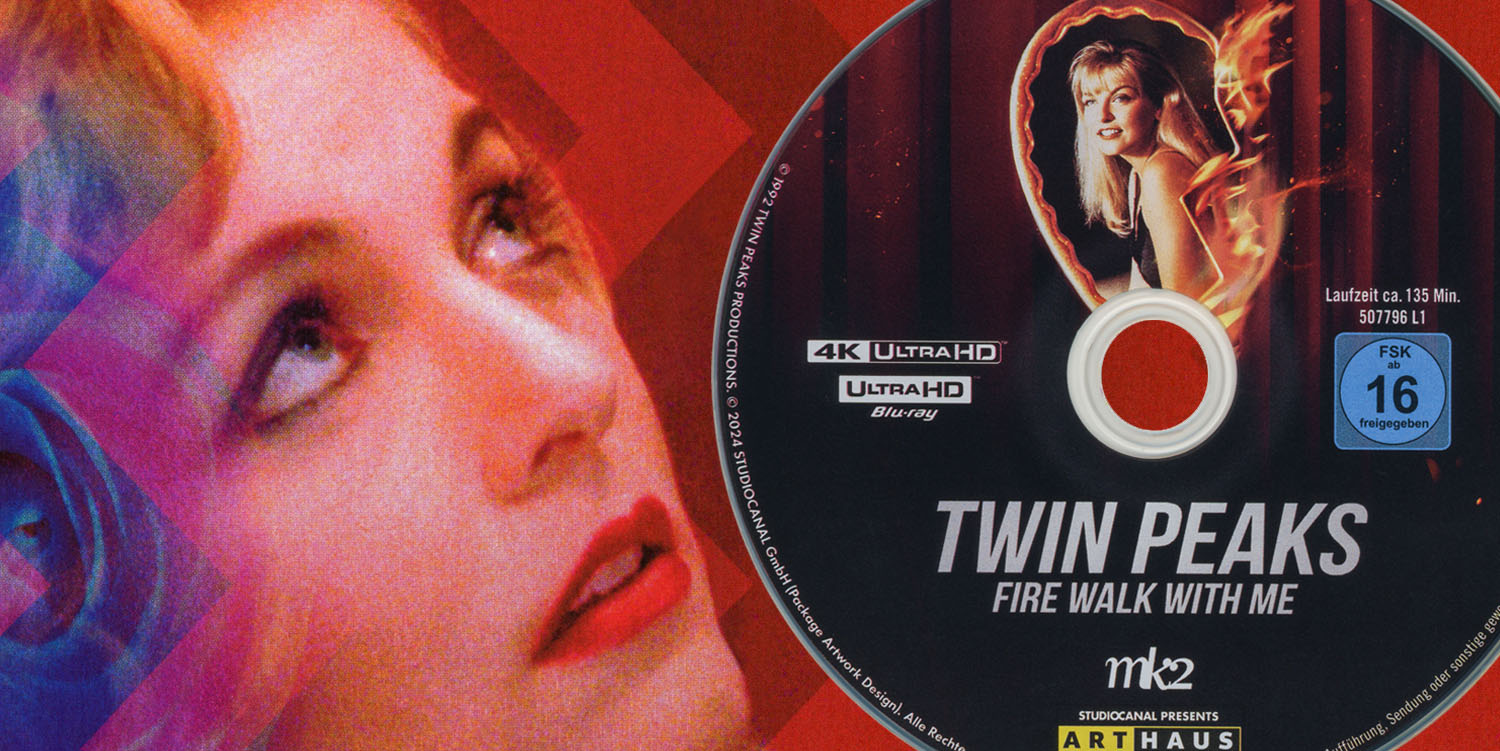
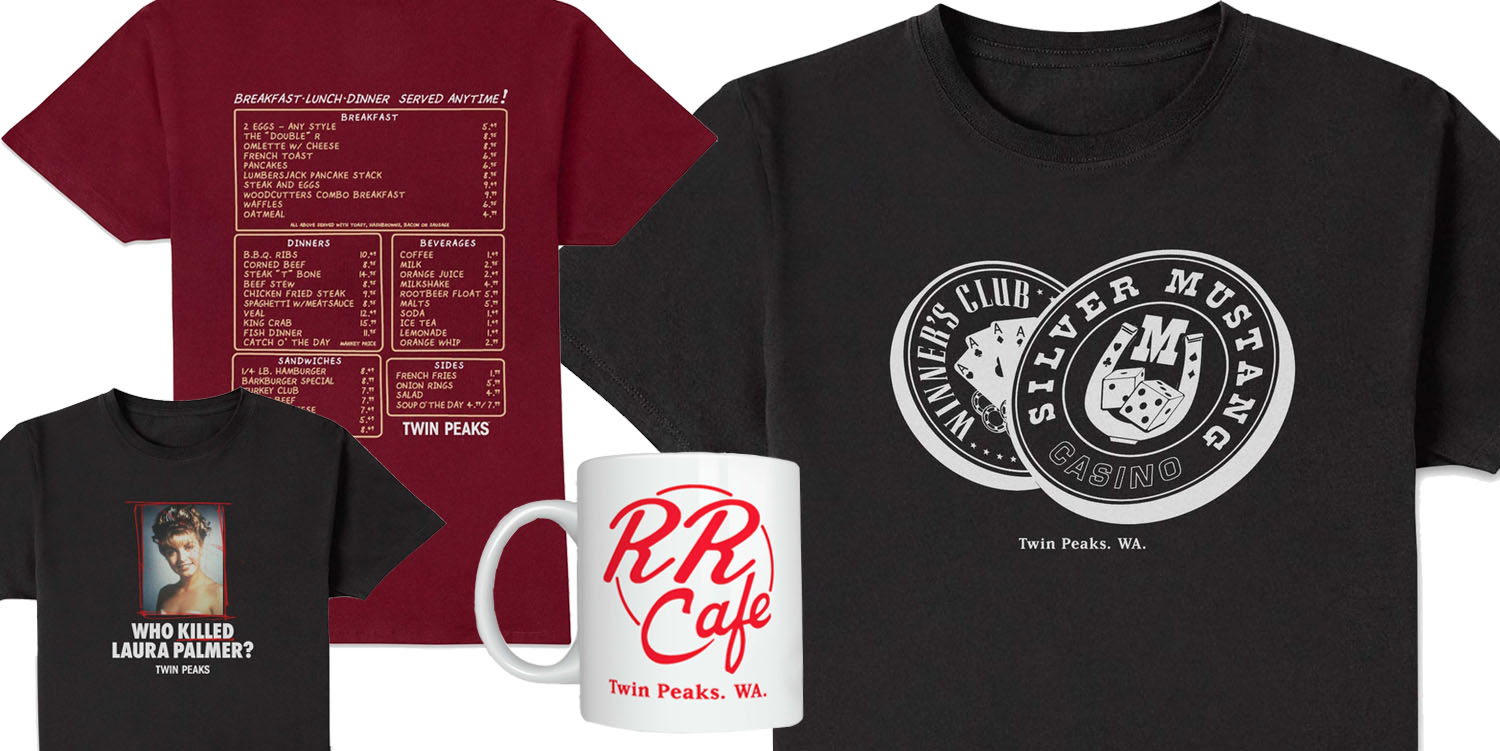
“Somewhere along the way, we lost four minutes as the original 1989 release stated the episode was 113 minutes.”
This is probably just due to what is called PAL speedup.
In NTSC, films get converted from 24 frames per second to 60 interlaced fields per second by adding a 3-2 pulldown so that each alternating film frame lasts either 2 fields or 3 and thus creating a 30fps (60 interlaced fields) video running at the correct speed.
PAL on the other hand runs at 50 interlaced fields per second so 24fps films are simply played back at 25fps to compensate and the result is a 4% speedup of the film.
@Mathieu – Ah ha! This is great. Thank you for that clarification. I will update the article with credit to you.
The time difference between the PAL and VHS versions is probably due to a difference in formats. There is a PAL speed up thing and that causes a run time difference.
Sorry I meant to say that the package design is copyrighted for 1990; you can see it on the first back cover image you posted.
@Justin – I noticed that too. I wish there was a specific artist associated with the cover image. Someone must have done it (similar to how Bob Larkin drew the cover illustration for “Diane … The Twin Peaks Tapes of Agent Cooper” – https://www.twinpeaksblog.com/2021/03/13/sound-peaks-diane-the-twin-peaks-tapes-of-agent-cooper/
Like the film festivals, I had no idea the pilot was available prior to the April 1990 broadcast. No wonder there was so much buzz around this series before it debuted (I remember those days!)
Although your article states that the 8th December 1989 was the first date that the VHS cassette of the European pilot version of Twin Peaks was available in the UK, this was when the retail version was made available. The rental version had been available in video rental shops for a few months before this (my guess is around September / October 89). I know this because I rented it and watched it with some friends around this time. I thought it was brilliant and loved the tagged on ending (it’s still my favourite version of the pilot as the Black Lodge scene seems much more powerful and far more Lynchian as a sudden coda to all we’ve just seen rather than as it is presented in the TV series as a mysterious dream that agent Cooper has in episode 3). I immediately wanted a copy but had to wait a few months before a retail version appeared. The other great thing about the European version is that we get to hear Bob’s forward voice (he’s always backward speaking in the TV series) and his beautifully sinister ‘death bag’ speach. Wonderful stuff.
Chanced upon this wonderful site whilst googling for info about the UK VHS. I’m certain to while away many hours on here in future, I’m sure. I’ve now developed a minor obsession with identifying the artist responsible for the first video release sleeve. The distinctive airbrush style immediately made me think of European greats like Campanile or Sciotti, or perhaps Renato Casaro – but it isn;t really in their style. Then I considered Philip Castle, who had done several Kubrick posters for Warner Bros. And the Harley is certainly in his area of expertise. But I cannot find a lead so far. I’ll keep looking, on and off. The sleeve certainly made a big impression on me at the time, when there was quite a buzz about the video release, though I did not see Twin Peaks until BBC2 broadcast it sometime later. Thanks for all your efforts here.
@Bill – Thank you for your kind words and for taking time to write. I appreciate any help in identifying the artist. I think folks should be credited for the work they do. Glad to know you and hope you enjoy the research on the site. Many more stories to share.
The Twin Peaks Pilot was first released on rental VHS in December 1989 with little fanfare. It was re-released on sell-though (retail) in September 1990, several weeks before the series was shown on BBC2 in October 1990.
Nice piece. One of my favourite on the site. As a British teenager of those years I remember most of it happening and have two of the VHSes pictured still!
The reason oil rigs are always included in UK physical media release disclaimers is that in the 1980s the UK was starting to have big off-shore, at-sea oil platforms, where hundreds of people would live for months. It confirms that screenings in those places for large audiences are in effect cinema screenings and are not per screening royalty exempt in the way home use.